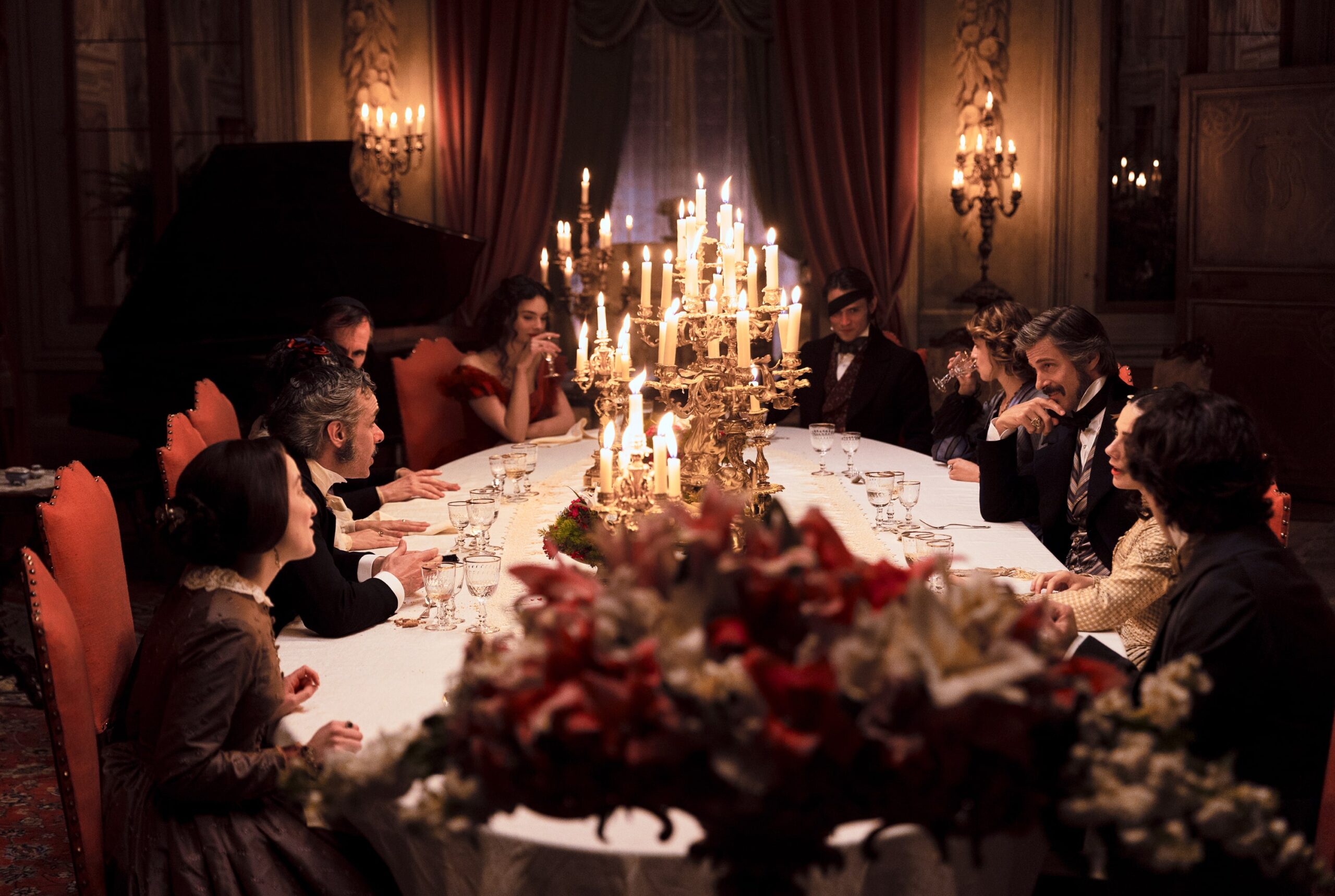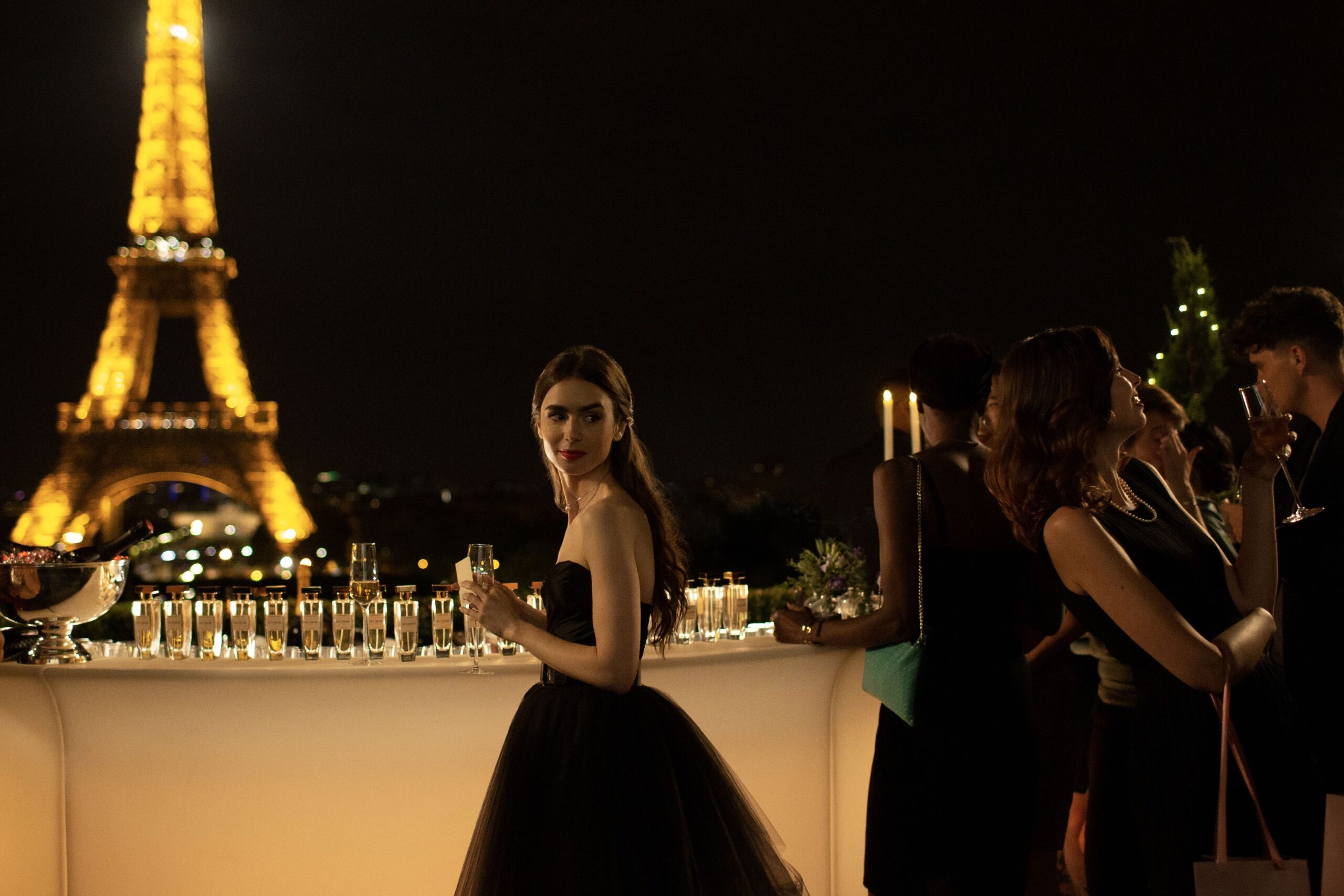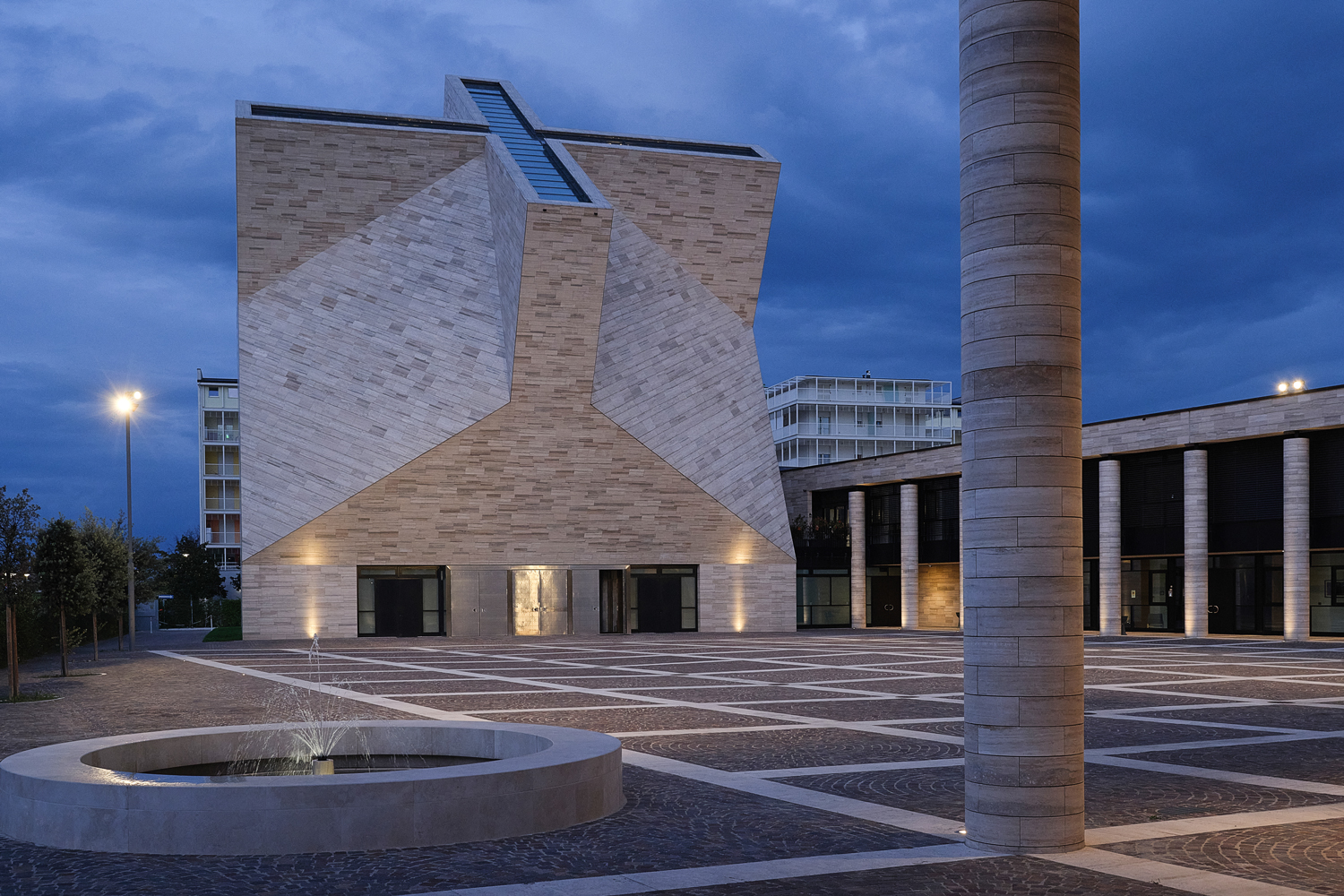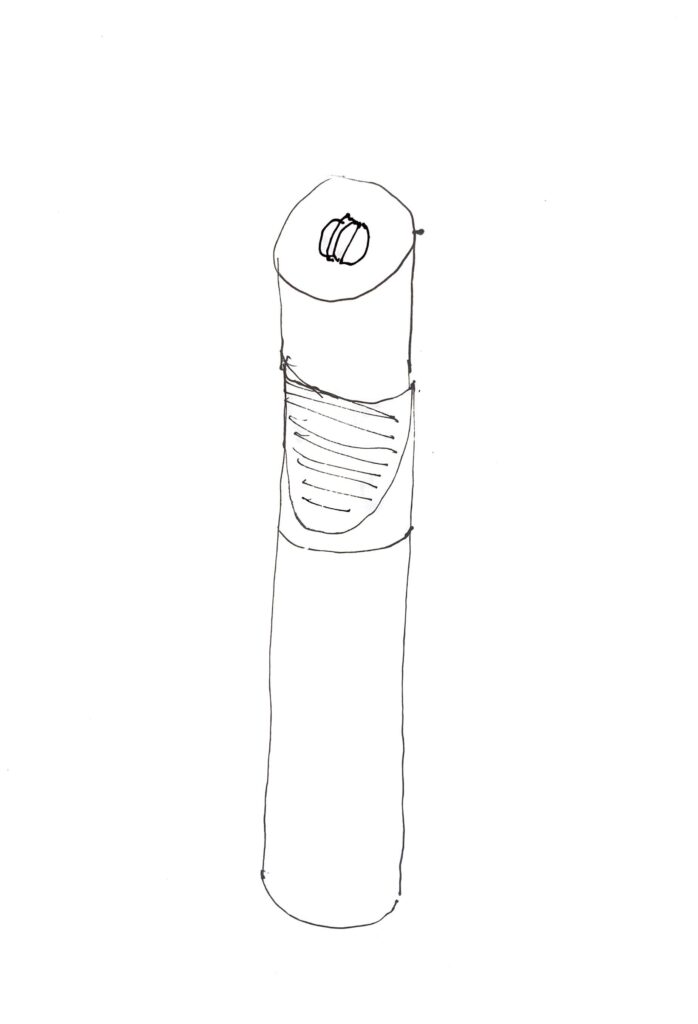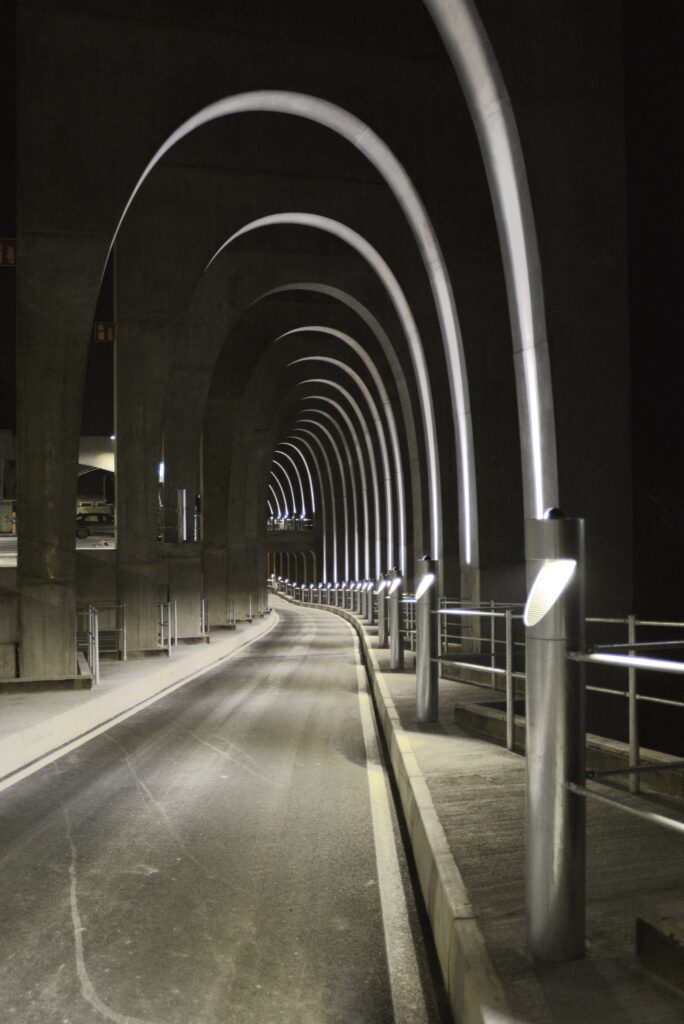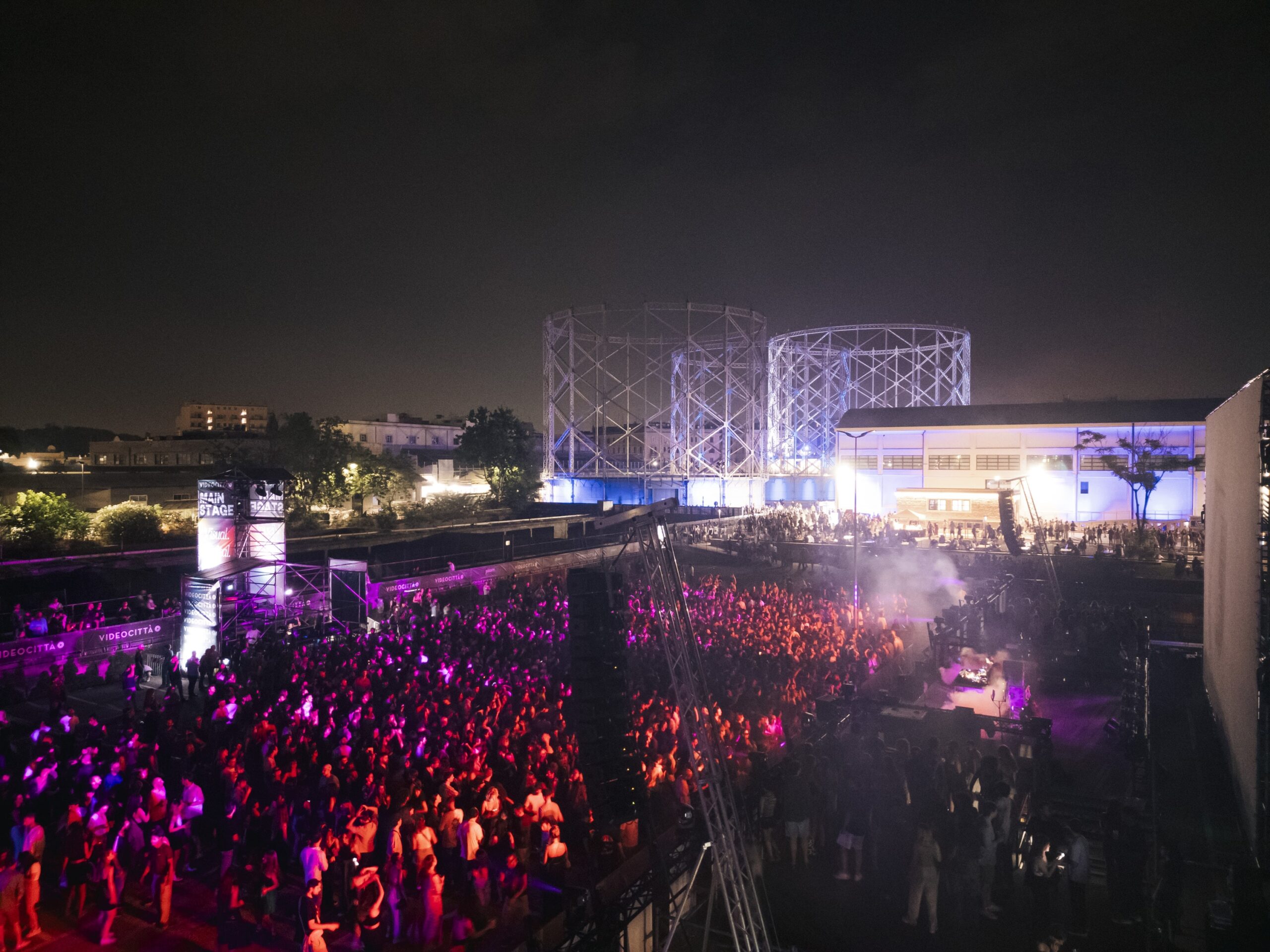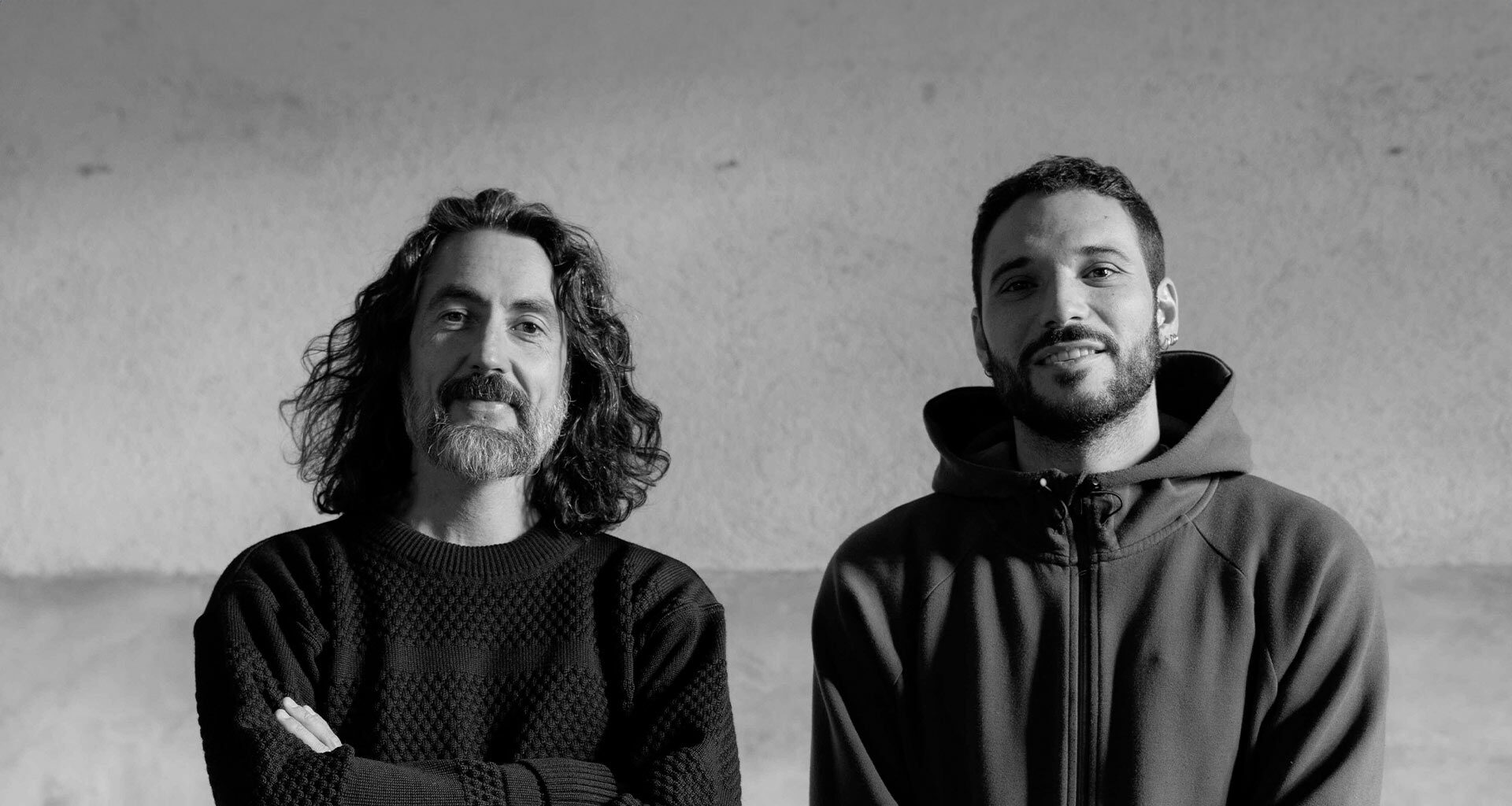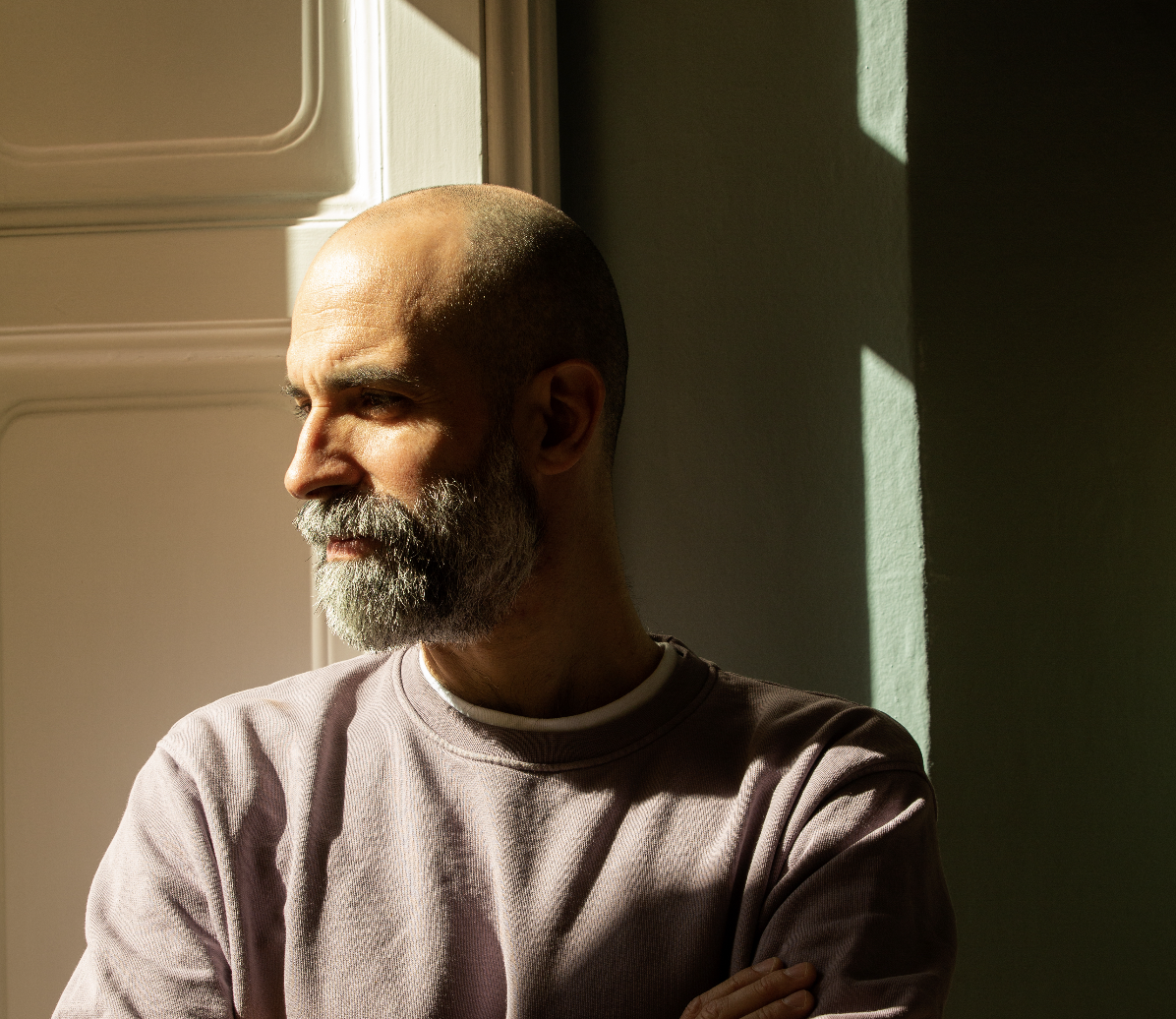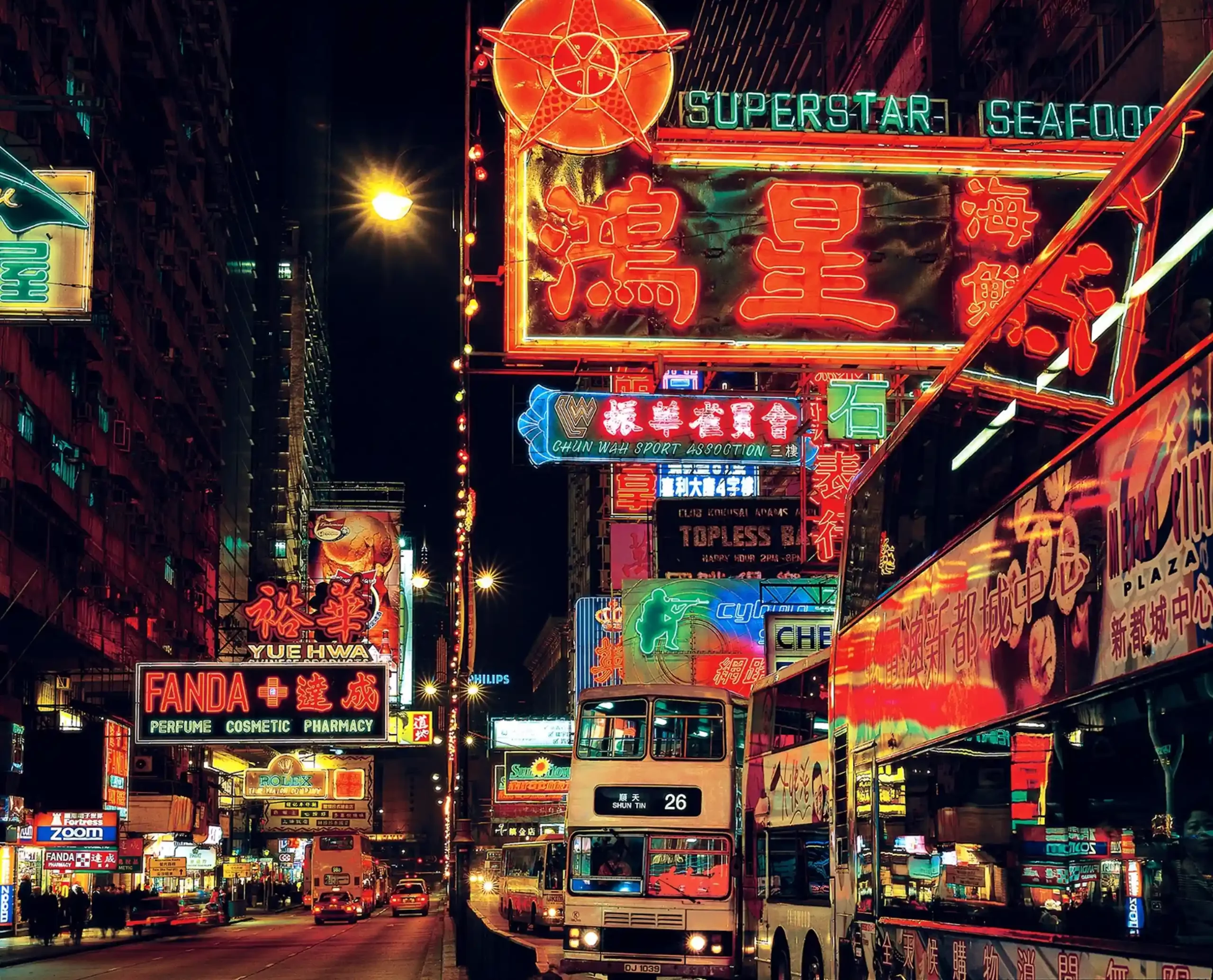With a history spanning over 120 years, Sanpellegrino is a leading international beverage company. Established in 1889 in Val Brembana, the brand was named after the thermal town where the company is based, the Art Nouveau village of San Pellegrino Terme. It has always been committed to the advertising side of the brand, which is known all over the world for its iconic red star and the ‘clavetta’ shaped bottle of soft drinks, and has recently opened the first premises of its new headquarters on the banks of the Brembo river, the Sanpellegrino Flagship Factory.
BIG’s Vision: the founding of the San Pellegrino Flagship Factory
The international call for submissions in 2016 asked for the redevelopment of the flows and connections, offices and perimeter areas, as well as the construction of a new driveway bridge, including all the brand’s representative, meeting and ‘experience’ spaces.
The winning project was the design by BIG-Bjarke Ingels Group. The concept is easily recognisable: it is the ‘aquatic’ equivalent of a wine cellar. The architecture of the factory and the Experience Lab is cosy, familiar and fresh. A factory filled with light and an open to the countryside around it. Key element of the project is the arch, which together with the avenue, the square and the portico evokes the classical elements of Italian architecture and urban planning. Currently, the completed sites include the new bridge, the multi-storey car park, offices and conference rooms. The area designated for the Experience Lab is still under construction.
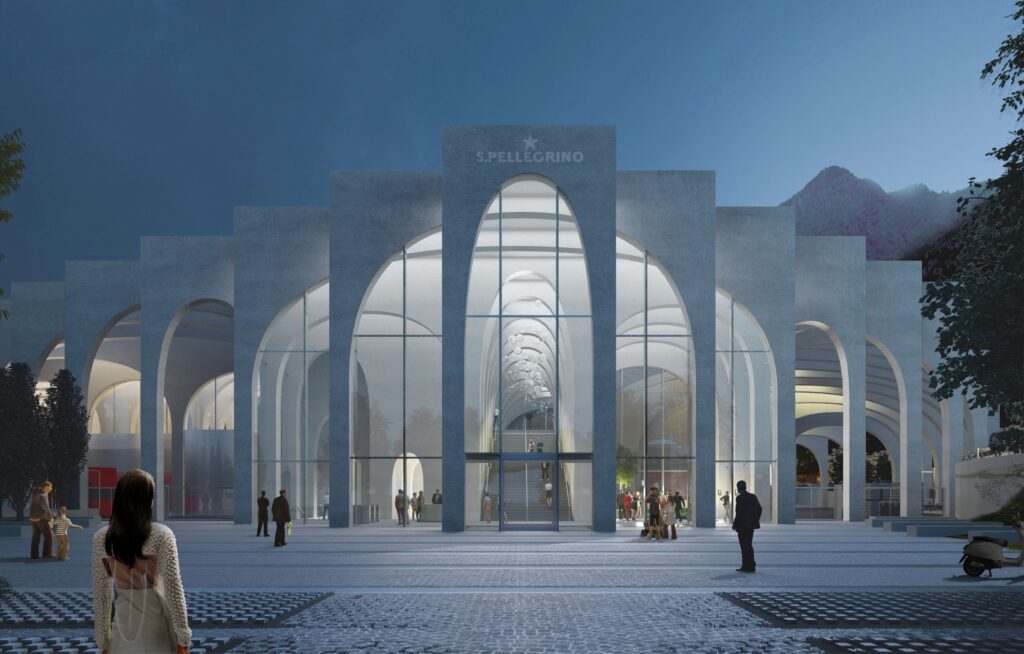
In between the series of concrete archways that expand and contract, large sheets of glass form the final shell, a transparent barrier that only physically separates the interior from the exterior. The architectural structures have a striking and evocative impact on the space’s natural lighting, and create a permanent exchange between light and shadow throughout the space.
Architect Piero Castiglioni and his collaborators Marco Petrucci and Mauro Zani developed the lighting design resulting in a synergy and continuity with the architectural design, integrating linear luminaires with the arches and creating continuous lines of light in the ceiling. A soft or sometimes strong and sharp atmosphere is perceived, depending on the spaces that are being crossed.
At the entrance to the parking area for the vehicles used for transporting goods, between the first arches, the brand’s iconic symbol stands out: the red star with a thin white outline on the inside, made of neon tubing: this echoes the use of the glass element, a key component of the project. In the multi-storey car park, on the other hand, ceiling-mounted luminaires have been installed between the arches, and custom-made bollards placed on the ground to punctuate the walkway.
I Bollards by Piero Castiglioni light up the San Pellegrino Factory
Architect Piero Castiglioni designed a unit that has different technical, optical and stylistic characteristics depending on its location. Besides its lighting function, the fixture has the purpose of acting as a passive restraint device, capable of retaining vehicles within the carriageway, with the aim of reducing the effects of accidents caused by skidding. This strong integration between luminaire and building element ensures a lower visual impact and therefore a uniform perception of space.
On the east and west ramps, the height of the bollard is 1.60mt: in areas where its only requirement is to illuminate the road surface, the fixture mounts an asymmetrical optic, while where, in addition to the road, it is necessary to illuminate the succession of archways, an additional source has been added with a ‘blade of light’ optic, which highlights the intrados of the archways, restoring their volumes and giving rhythm to the architecture within the landscape. On the other hand, in the car park the height of the bollard varies between 1.60mt and 2.00mt depending on the area of installation; it is available in three different asymmetrical optics and sometimes with the addition of blade optics dedicated to the archways. The colour temperature chosen for all the outdoor luminaires is 4000k.
Built to improve the efficiency of the internal road system, the new bridge was lighted with a design that follows the same approach used in the other areas thanks to the use of specific versions of the bollard. The element is 1.15 mt high with asymmetrical optics and is positioned on one of the two sides of the carriageway. In this way it integrates perfectly with the architectural composition of the bridge and it is not a disruptive element in the landscape. On the opposite side, merging with the concrete parapet, recessed luminaires have been installed.
The Bridge: a grand entrance to the San Pellegrino Factory
On the outer side of the bridge, the Sanpellegrino logo is clearly outlined. Built in reinforced concrete with a slight undercut to make it visible during daylight hours, it is lit at night by an extremely cold source (6500k) to evoke the weightlessness of water. In the lower part of the bridge, spotlights indirectly illuminate its intrados, reflecting the movement of flowing water. This lighting scheme is only used during special events and has been designed with great respect for the local fauna and flora.
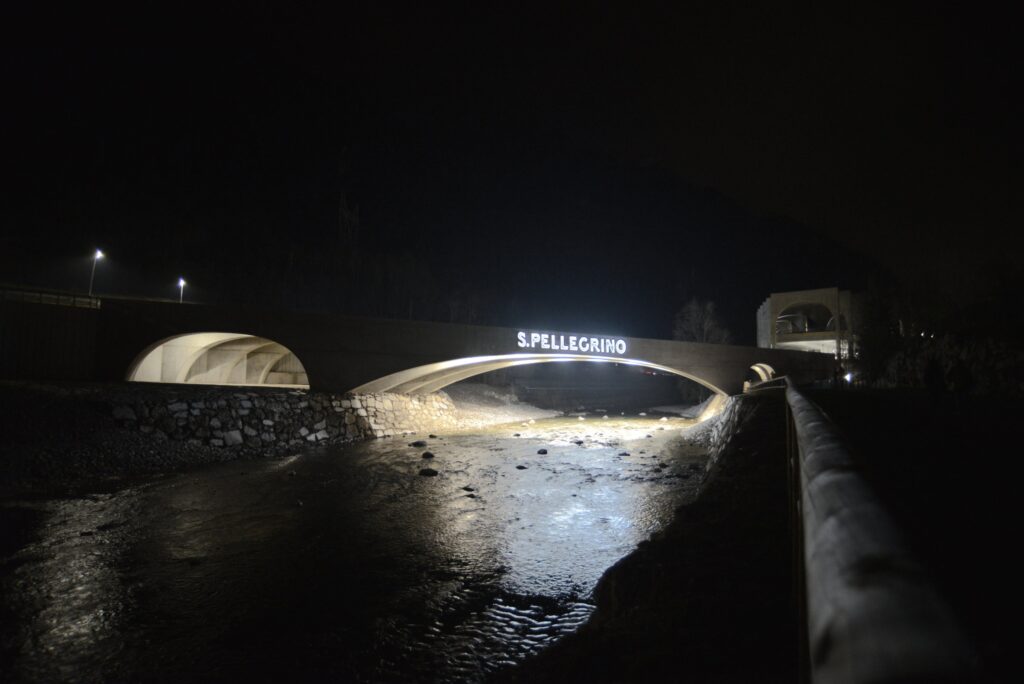
New energy-saving Indoor Lighting
The new lighting design also continues indoors, where offices, meeting rooms and conference rooms have been refurbished. The work also focused on energy efficiency, useful for obtaining the LEED certification. The indoor lighting is based on the use of linear pendant luminaires with UGR˂19 optics, in accordance with the visual comfort values of the workstations, while in the meeting rooms circular pendant luminaires with a diffuse light distribution are used.
